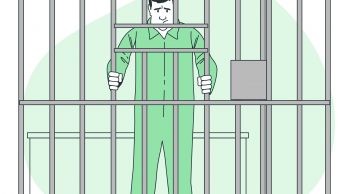This post is part of a series on constitutional and political questions relevant to contemporary times written by Sughosh Joshi, a political researcher working with I-PAC. Sughosh also publishes a weekly substack newsletter called ‘In the Matter of the Republic’, you can check it out here and subscribe to it for regular updates.
The caste census conducted by the Bihar Government has come under the spotlight after the Government released data pertaining to the proportion of population of different castes. This was followed by calls of ‘jitni aabaadi utna haq’ (rights proportion to population), i.e., proportional representation in all spheres. There is an equally important question that the caste census can answer – sub-classification of reservation provided to Scheduled Caste and Other Backward Classes communities.
What is the basis of reservation?
Articles 15(4) of the Constitution of India permits the State to make ‘special provisions’ for the advancement of socially or educationally backward classes (SEBCs) or Scheduled Castes (SCs) or Scheduled Tribes (STs). Article 15(5) speaks of special provisions for the abovementioned SEBC, SC or ST communities with respect to their admissions in educational institutions, except minority educational institutions. Article 16 speaks of “Equality of opportunity in matters of public employment”. Article 16(4) allows the State to provide for reservations of posts in favour of backward class of citizens who are not adequately represented in services of the State. For SC and ST communities, the President had the power to issue a list once as per Articles 341 and 342, respectively, and these lists could be further amended only by the Parliament. In 2018, by the Constitution (One hundred and second Amendment) Act, the same logic was extended to SEBC communities by adding Article 342A. Subsequently, Article 342A was amended further to permit state governments to ‘prepare and maintain’ their own lists.
Over the last 74 years, the union government and state governments have provided for reservations to SEBC, SC and ST communities using these Articles of the Constitution. The adoption of the recommendations of the Mandal Commission report by the government led by V. P. Singh was a watershed moment in this context. It might be important to note that Other Backward Classes (OBC) is not a Constitutional category but has been utilised colloquially to refer to SEBC communities. Therefore, it is not beyond imagination that communities can be provided reservation in a quota separate from the OBC quota.
What is sub-classification?
Sociological reality dictates that not all communities that form part of a reservation category are equally backward. Any reservation category does not form a ‘homogenous group’ and differences inter se exist. While determining if a community should be added to a reservation category, the only question is whether the community is backward as per the criteria determined. The relative backwardness of a community with respect to other communities in that category is not considered for providing reservation.
Accordingly, state governments have gone ahead with sub-classification of SEBC communities. At least 10 states, including Andhra Pradesh, Maharashtra, Tamil Nadu, Bihar and West Bengal have categorized backward classes, each in their different ways; the detailed manner of sub-classification can be found here. The National Commission for Backward Classes (a statutory body before the 102nd Amendment) had in 2015 suggested that sub-classification be done for OBC reservation, into three categories – Extremely Backward Classes (Group A), More Backward Classes (Group B), Backward Classes (Group C). However, no action was taken on this report.
In 2017, the President appointed a commission under the chairpersonship of Retired Justice G Rohini to “Examine Sub Categorization of other Backward Classes under Article 340 of the Constitution”. While the Commission was supposed to submit its report by 12th January, 2018 it submitted its report after 13 extensions on 31st July, 2023. The findings of the Commission have not been made public yet. However, during its discussions, the Commission examined the 1.3 Lakh central government employees and seats in central educational institutions under the OBC reservation up to 2018. It found that there are 2,633 communities in the OBC list. Out of these, 10 castes benefitted the most, finding representation in 24% of the seats. 38 castes contributed to another 25% of the seats. On the other hand, 983 communities did not find any representation in these 1.3 Lakh seats.
This goes ahead to show the disparity within various communities of the OBC category. It is important to keep in mind that this exercise has not been carried out for SC and ST categories, hence there is no information about such disparity.
What have courts said?
Sub-classification in reservation, especially for SEBC reservation is not a new question. This was first answered in the case of M. R. Balaji v. State of Mysore in 1962 and the Supreme Court (SC) said that division of backward classes into two categories is not justified under Article 15(4). 23 years later, in K. C. Vasanth Kumar v. State of Karnataka, Chinappa Reddy, J. disagreed with the view in M. R. Balaji. He said that sub-classification may be permissible if there exists a class of people who are “far far behind the most advanced classes”. This, in his opinion, would be necessary to prevent the backward classes from taking away all the benefits, leaving nothing for the more backward classes.
When the SC was hearing the challenge to the OBC reservations introduced by the VP Singh government in the landmark case of Indra Sawhney v. Union of India, it touched upon this issue. The majority held that there was “no constitutional or legal bar to a State categorizing the backward classes as backward and more backward”. The majority said that as far as the sub-classification is reasonably done the Court’s interference will not be warranted. The Court also illustrated this principle by giving an example:
“To give an illustration, take two occupational groups viz., gold-smiths and vaddes (traditional stone-cutters in Andhra Pradesh) both included within Other Backward Classes. None can deny that gold-smiths are far less backward than vaddes. If both of them are grouped together and reservation provided, the inevitably result would be that gold-smiths would take away all the reserved posts leaving none for vaddes.”
Therefore, the position on sub-classification within the OBC category is clear; state governments have already implemented these at the state level. However, the Courts have not been forthright in deciding sub-classification within the SC category.
Sub-classification in SC reservation
The first time this question arose was in E. V. Chinnaiah v. State of Andhra Pradesh. The Supreme Court, while striking down the sub-classification of Scheduled Caste reservation into four categories, said that once communities become part of the Presidential list under Article 341, they form a homogenous group. The Court also said that the scheme of Article 341 does not permit ‘disturbing’ the list except by way of amendment by the Parliament.
This question came up again in the case of Davinder Singh v. State of Punjab in which the SC while hearing an appeal against the decision of the Punjab & Haryana High Court on sub-classification of SC reservation doubted the correctness of the Chinnaiah decision and referred the case to a Constitution Bench. The Constitution Bench, in a judgment written by Arun Mishra, J. held that in their opinion, the Chinnaiah decision was in fact, wrong. However, because the Chinnaiah Bench was a Bench of coordinate strength (both were a Bench of 5 Judges), the case was referred to a larger Bench of 7 Judges – this Bench is yet to be formulated.
There is no reason why sub-classification should be permissible in OBC reservation but not in SC reservation, especially when there is enough proof on record to show the established hierarchy within different SC communities. For an excellent exposition on the point, please read this piece in the Indian Constitutional Law and Philosophy blog.
The Role of a Caste Census
How does the caste census fit into this scheme of sub-classification? A caste census is not supposed to collect data only about the numerical strength of a caste, it is also supposed to cover the social, educational, and economic aspects of the members of a community. An aggregation of this data would provide two important insights – the proportion of a community in the population as compared to their representation in government services (since Article 16(4) speaks of adequate representation) and the relative backwardness of communities within the category. Any sub-classification within OBC and SC categories can be done only after a comprehensive data collection exercise is completed.
Conclusion
Often, the argument against reservation lies in the claim that only a few communities continue to gain at the expense of other communities – something that is visible from the data studied by the Rohini Commission. Sub-classification could be a successful way to make amends to this trend. However, it cannot be done without availability of comprehensive data. A caste census would be fully successful only when its findings result in furtherance of equitable distribution of resources in all ways – the Bihar Government must also release social, educational and economic data collected to achieve that end.
Sughosh is a political researcher working with I-PAC. He is deeply interested in Constitutional Law, Politics and Policy. He graduated from NALSAR University of Law. Views are personal.







